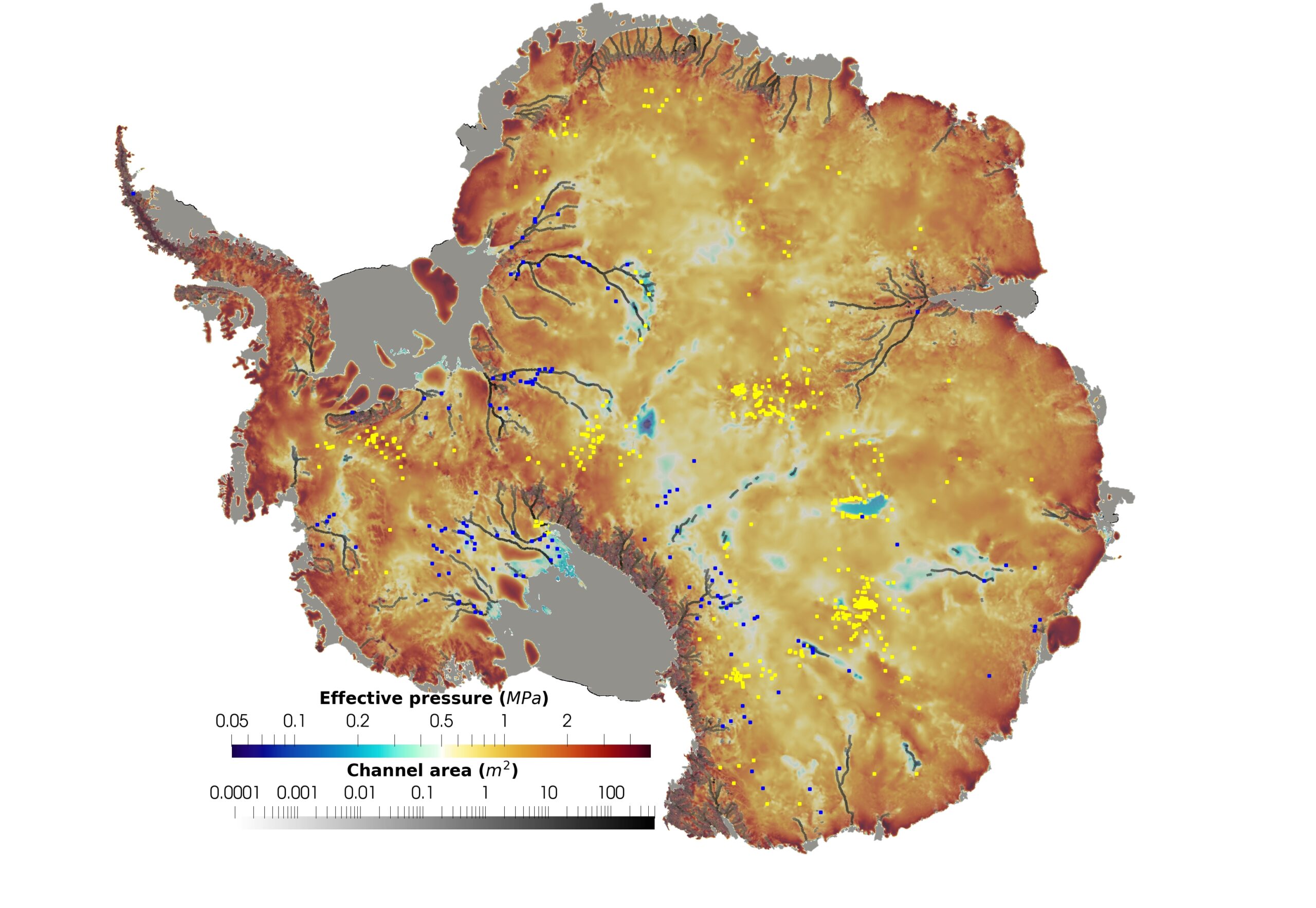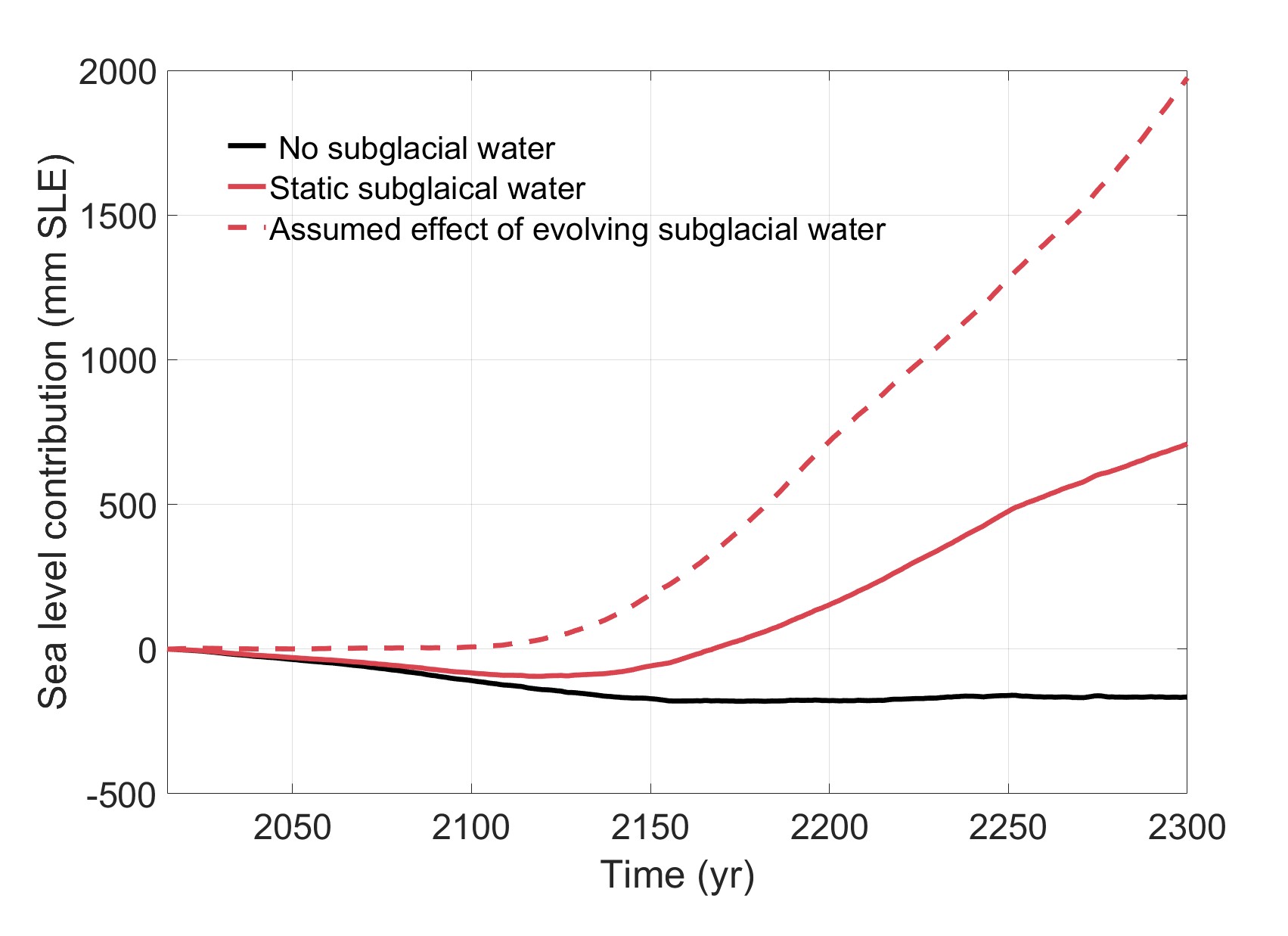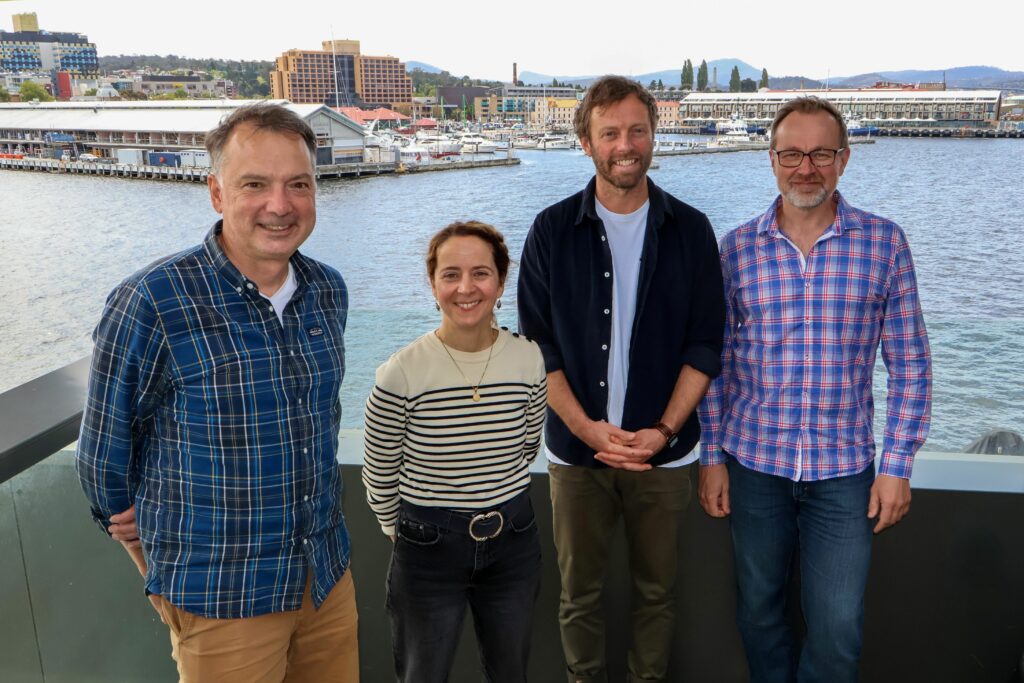Antarctica’s hidden water flows are accelerating sea-level rise
8 April 2025 — Dr Chen Zhao, AAPP ice-sheet modeller
For decades, scientists have worked to predict how fast Antarctica’s ice is melting—and how much it will raise global sea levels. But a hidden force beneath the ice could be speeding up the flow of ice into the ocean, faster than we thought.
Our new research — just published in Nature Communications — reveals that water flowing beneath the Antarctic Ice Sheet plays a much bigger role in ice loss than current models assume.
Beneath Antarctica’s kilometres-thick ice sheet lies a vast network of interconnected lakes and drainage pathways, known as subglacial water. Streams of subglacial water come from meltwater at the top of the glacier and melting at the base where it grinds against the bedrock. This water can lubricate the ice, allowing it to slide more rapidly toward the ocean. However, most ice sheet models do not include subglacial water, which remains largely invisible.

By including the effect of evolving subglacial water in ice sheet simulations, we found that its presence can triple ice discharge. Crucially, our study highlights how assumptions about subglacial water pressure—particularly near the grounding line—strongly influence sea-level rise projections.
We find that failing to account for evolving subglacial water dynamics could lead to an underestimation of global sea-level rise by up to two metres by 2300 (as seen in the gap between the black and dotted lines in the graph below).
To put this into perspective, a two-metre rise would put many coastal megacities and small island nations at extreme risk, requiring large-scale adaptation efforts and potentially displacing millions of people. Economic damage could reach trillions of dollars, impacting critical infrastructure and reshaping coastlines worldwide.

A chart contrasting the different contributions to sea-level rise from the Antarctic Ice Sheet depending on how subglacial water pressure is included. Zhao, C., et al, 2025. Nature Communications.
One of the most concerning findings from our study is that ignoring the evolution of subglacial water could lead scientists to underestimate when critical tipping points might be reached. These tipping points mark thresholds beyond which ice loss accelerates rapidly and becomes unstoppable. Our models suggest that these tipping points could arrive 40 years earlier than previously anticipated.
READ THE PAPER: Subglacial water amplifies Antarctic contributions to sea-level rise
READ MORE IN ‘THE CONVERSATION’: Antarctica’s hidden threat: meltwater under the ice sheet amplifies sea-level rise



